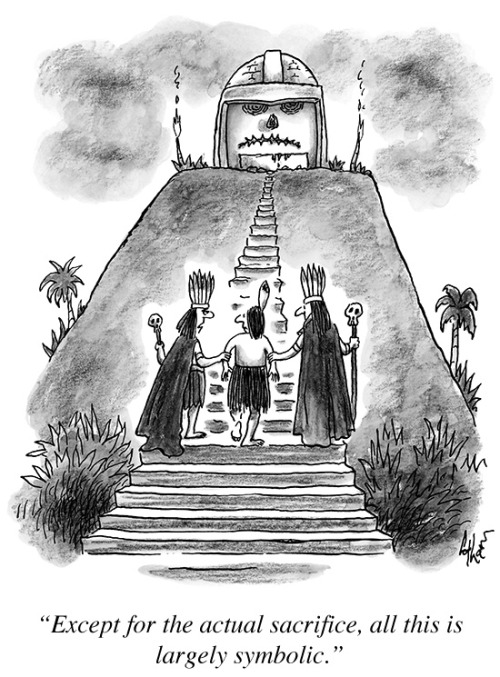Part of the Embodying Biblical Rituals in a Digital Age series
How Do Our Bodies Think? Embodied Cognition and Ritual
The Humans who Worship
Theologically speaking, religious worship is not supposed to be about us. Rather, it’s an expression of gratitude, an act of devotion, an attempt to give glory to a transcendent God. And yet, even while we’re not the focus, the practice of worshipping has a secondary role of orienting us. James K. A. Smith begins his liturgical theology by discussing the ritual of the shopping mall, arguing that the whole setup is a kind of secular liturgy which is designed to align — or for Smith misalign — our desires towards its own ends.1James K. A. Smith, Desiring the Kingdom: Worship, Worldview, and Cultural Formation (Grand Rapids, MI: Baker Academic, 2009), 19-22. For a critique of Smith’s stark divide between sacred and secular formation, see Jennifer A. Herdt, “The Virtue of the Liturgy,” in The Blackwell Companion to Christian Ethics, ed. Stanley Hauerwas and Samuel Wells (Oxford: Wiley-Blackwell, 2011). Hence, attending to the kinds of worshipping creatures we are may help us to understand how worship shapes us.
Enjoying this article? Read more from The Biblical Mind.
One important aspect of our humanity that seems particularly germane to understanding rituals is our embodiment. It seems obvious, but perhaps so obvious that it can sometimes be overlooked, that rituals involve doing things with our bodies and using our bodies to interact with other people, objects, and spaces. There are many rich ways to think about the body which have developed in the humanities in general and theology in particular. However, one surprising new lens on embodiment has recently developed in cognitive science — surprising because until recently cognitive science was almost exclusively concerned with what went on in our heads and tended to abstract away from the body. In this article I will briefly introduce a new paradigm in cognitive science known as embodied cognition and flag some ways in which it might help us to rethink what rituals do to us.
Introducing Embodied Cognition
Embodied cognition is, broadly speaking, a new paradigm in cognitive science which considers how the particular kinds of bodies we have shape the way we think. Beyond that very general definition the field quickly grows more complex. Soon after one pair of researchers in the field championed embodied cognition as ‘the most exciting idea in cognitive science right now,’ they also acknowledged that it ‘quickly came to mean at least six different things.’ 2Andrew D. Wilson and Sabrina Golonka, “Embodied Cognition Is Not What You Think It Is,” Frontiers in Psychology 4, no. 58 (2013).Various qualifiers for cognition have subsequently blossomed: cognition as distributed, extended, enactive, embedded, situated. These qualifiers generally fall under the broader umbrella of embodied cognition, but pick out different emphases or theories.3 For a helpful survey of embodied cognition and its sub-theories, see Lawrence A. Shapiro and Shannon Spaulding, ‘Embodied Cognition,’ in Stanford Encyclopedia of Philosophy, ed. Edward N. Zalta (2021). https://plato.stanford.edu/archives/win2021/entries/embodied-cognition/.
One helpful way to grasp the sprawling landscape of embodied cognition is to sketch its history. Given the complexity of the human mind, those seeking to grasp it have often reached for metaphors from human technology to illuminate it. Memory is like the imprint on a wax seal; the psyche is like a hydraulic system with pressure buildups and releases. It’s hardly surprising that the computer became the twentieth century’s dominant metaphor for understanding the mind. Like computers, the mind was thought to receive information from input devices (such as sensory perception), turn it into abstract symbols, process it centrally using algorithms, and then produce outputs (such as behaviours).
While the mind-as-computer metaphor worked in some ways (e.g., both could perform mathematical calculations), it also smuggled in a number of assumptions. For example, one can take computer software and run it on different kinds of hardware (from punch cards to vacuum tubes to silicon chips). As long as the hardware can perform a standard set of logical operations, the software developer can ignore the details of how her programme will be physically implemented. Transfer this assumption to the human mind, and it quickly leads to the analogy that the brain is a computer which does the central processing. Further the rest of the human body merely provides life support for the brain and acts as a conduit for inputs and outputs, but is irrelevant to how the mind thinks.
One thing all embodied cognition research has in common is a critique of this set of assumptions about the human mind (sometimes referred to as ‘cognitivism’ or ‘computationalism’). This critique is helpfully organised around three hypotheses. First, instead of representing concepts as abstract symbols we use perceptual symbols. Your concept of a dog is less like a dictionary definition or a set of abstract properties, and more pastiche of sensory impressions you get from dogs: how they look, sound, smell, feel to pat, etc. Hence the different modes of sensory perception that your body has shapes your concepts. Second, instead of processing everything using internal models of the world, we often use our senses and bodies to solve tasks interactively. For example, catching a cricket ball in the outfield is less like solving a problem from physics homework in your head, and more like watching the ball, moving in response, and then constantly adjusting as you go. “Keeping your eye on the ball” wouldn’t be necessary if you could simply solve a physics problem in your head and then run to where you thought the ball was going to land. Third, instead of thinking taking place exclusively in the brain, perhaps the process is more distributed to other parts of our bodies (such as in emotional body states) or resources outside of our bodies altogether (our notebooks, our shopping lists, our smartphones). The resulting picture is one in which our bodies (beyond the brain) and the environments they operate in are a crucial element of any account of how humans think.
That, in a nutshell, is embodied cognition. It’s not a theory plucked from nowhere: there is a growing body of evidence from scientific studies — ranging from neuroimaging to experimental psychology, AI to robotics, and numerous other disciplines — which develops and defends the theory. Nevertheless, it is still a relatively new paradigm, and while promising examples suggest that it provides the best explanation for some human cognition, the jury is still out on whether it applies to all human cognition. Hence scholars remain divided on whether embodied cognition revolutionizes cognitive science or merely tinkers with it.
Rethinking Ritual with Embodied Cognition
Embodied cognition offers a suggestive lens for rethinking religious rituals.4I use the fairly modest term “suggestive” quite deliberately here. Not only is embodied cognition a new paradigm which could benefit from a great deal more testing, but some of the studies it is built upon also have a number of issues associated with them (such as replication, unrepresentative samples, small effect sizes, etc.) which places a question mark over just how much confidence one should place in them. In particular, it draws our attention to the bodily movements, gestures, and postures adopted in ritual, as well as the material objects and environments used for rituals. Viewed under the embodied cognition paradigm, the bodily and material aspects of rituals can be seen as part of our ritual cognition, impacting the way rituals make us feel or think.
Indeed, a number of embodied cognition studies suggest that the kinds of things bodies do in religious rituals have particular cognitive effects. For example, synchronised movement such as in processions or singing together seems to increase social bonding.5E.g., see Paul Reddish et al., “Collective Synchrony Increases Prosociality Towards Non-Performers and Outgroup Members,” British Journal of Social Psychology 55, no. 4 (2016). Although this is a general bodily mechanism which might apply in any number of contexts (sporting events, military drills, marching bands, etc.), it’s certainly also a feature of many religious rituals. This may not be the only way in which rituals give us a greater sense of belonging and togetherness, but it is probably one important mechanism by which rituals achieve social bonding.
There are many other ways in which the bodily and material dynamics of rituals might be bound up in cognition.6For a longer list of connections between ritual embodiments and thinking, see Chapter 6 in Tobias Tanton, Corporeal Theology: Accommodating Embodied Thinkers (Oxford: Oxford University Press, 2023). Everything from bodily gestures or facial expressions; postures such as kneeling or raising one’s hands; vast, ornate, or even spare architectural settings; vestments and clothing; music and sound; consuming foods or other substances; smells such as incense; prayer objects such as beads; Bibles which people underline or otherwise manipulate; stained glass windows, statues, and other visual representations; and even landscapes and urban planning which situate religious sites can impinge upon our cognition in ritual. The potential cognitive effects are as manifold as the stimuli: attention can be direct; memories can be evoked; emotions can be suggested; concepts can be triggered; and social dynamics can be instigated. Hence (as anthropologists well know but cognitive scientists are still coming to appreciate) leaving out the bodily and material aspects of ritual can lead us to miss a lot of what is going on. These connections between particular ways in which the body is deployed and (sometimes subtle) shifts in the way we think might lead us to change the way we think about rituals in two ways.
First, we may think differently about the meaning(s) of rituals. There’s a tendency to think of rituals as having symbolic meanings — meanings which are assigned by historical traditions or conventions. For example, kneeling in prayer symbolises humility. However, if our bodily participation has specific cognitive effects, then it also carries an ‘embodied meaning’, a meaning which is intrinsic to a specific embodiment. On a purely symbolic view, kneeling and doing a handstand would be equally apt prayer postures since a convention could attach the same meaning to either. However, if there is something particular about kneeling (e.g., that it lowers the body, that it makes one less mobile), then the embodied meaning plays a role, perhaps alongside other symbolic meanings.
Take for example this extended explanation of the meaning of incense in Christian rituals:
Incense… is burnt at evening prayer, following the Jewish offering of incense at the evening sacrifice. It is used to prepare people and things for holy use, such as the bread, wine and worshippers at the Eucharistic offertory. It is used to honour holy things, such as the consecrated elements of the Eucharist or the images of the saints. That then allows for an extra-ordinary and moving association: the censing of the body at a funeral, as a holy thing. The web of associations extends further still. This is the incense that was brought, perhaps, by a member of the congregation as a gift for the church at Epiphany. This was in honour of the incense presented to the infant Christ by the Magi. Incense just like it is pressed into the Paschal candle at Easter Vigil: five grains for the five wounds—”by his holy and glorious wounds may Christ our Lord guard us and keep us.”7Andrew Davison and Alison Milbank, For the Parish: A Critique of Fresh Expressions (London: SCM Press, 2010), 110-111.
This excerpt offers an impressive explanation of the meaning of incense in ritual: it draws together the history and traditions around incense and gives examples of its use in rites of passage, points in the church’s liturgical calendar, and scriptural narratives. It thereby weaves together a set of associations and connotations, all of which contribute to a rich and textured understanding of the meaning of incense in the context of Christian rituals. However, all of these meanings are symbolic rather than embodied. Recent studies have confirmed that incense has direct physiological and cognitive effects, making us feel warmer and happier.8Arieh Moussaieff et al., “Incensole Acetate, an Incense Component, Elicits Psychoactivity by Activating TRPV3 Channels in the Brain,” The FASEB Journal 22, no. 8 (2008). Thus, an embodied account helps to further explain the meaning of incense in ritual concepts and why it is a good choice to fill this role in the ritual without supplanting symbolic meanings.
There’s a second, related way in which embodied cognition might shift our understanding of ritual. If participating in rituals affects us through such embodied mechanisms, this should lead us to think of rituals as transformative rather than mere expressions. If we think of rituals as expressions, this assumes that we have some kind of pre-existing mental state (perhaps an idea, a desire, or a more sophisticated doctrine) which we wish to express by acting out the ritual. However, this sounds suspiciously like the old “cognitivism” which embodied cognition sought to critique: all of the “real” cognition is brain-bound, and ritual behaviours are merely outputs produced after the cognising has happened. By contrast, under the embodied cognition paradigm ritual behaviours are in the loop of cognising; we use them to think and reason. Rituals thus do not merely express our thoughts, but also can also shape them.9Blaise Pascal, Pensées and Other Writings, ed. Anthony Levi and Honor Levi (Oxford: Oxford University Press, 2008), §250-253. Participating in a ritual might express a desire to glorify God, but can simultaneously train our desires. Sometimes the practice comes before the thought or desire. Blaise Pascal already intuited this idea in the 17th century when he recommended to those who struggled to believe that they should engage in religious practices and the belief would come.
Conclusion
The Covid-19 pandemic forced many religious communities to move their worship into online spaces, dramatically altering ritual embodiments. (Though one shouldn’t equate virtual worship with disembodiment, since there were still bodies in front of the cameras and microphones.) For many the shifts in embodiment radically changed the experience of worship, even as they attempted to emulate other aspects of their worshipping habits. This experience should help us to realise that we often take the embodied aspects of ritual for granted.
Embodied cognition offers an important way of putting the body back in the picture when it comes to thinking about rituals. It’s particularly helpful because it goes beyond general assertions that we should take more embodied approaches and gets into specifics about how certain bodily manoeuvres can influence or even participate in our cognition.

There’s a wonderful New Yorker cartoon by Frank Cotham which shows two robed figures leading a third up to a foreboding altar, with the implication that they are preparing for a human sacrifice.10https://newyorker.tumblr.com/post/101930189580/a-cartoon-by-frank-cotham-for-more-from-this/. One of the robed priestly figures turns to the hapless victim and attempts to offer some words of comfort: “Except for the actual sacrifice, all this is largely symbolic.” The cartoon captures nicely, I think, the fact that if we think of ritual purely in terms of its “symbolism” and “expression,” we’re likely to miss something that happens to and through the body.





